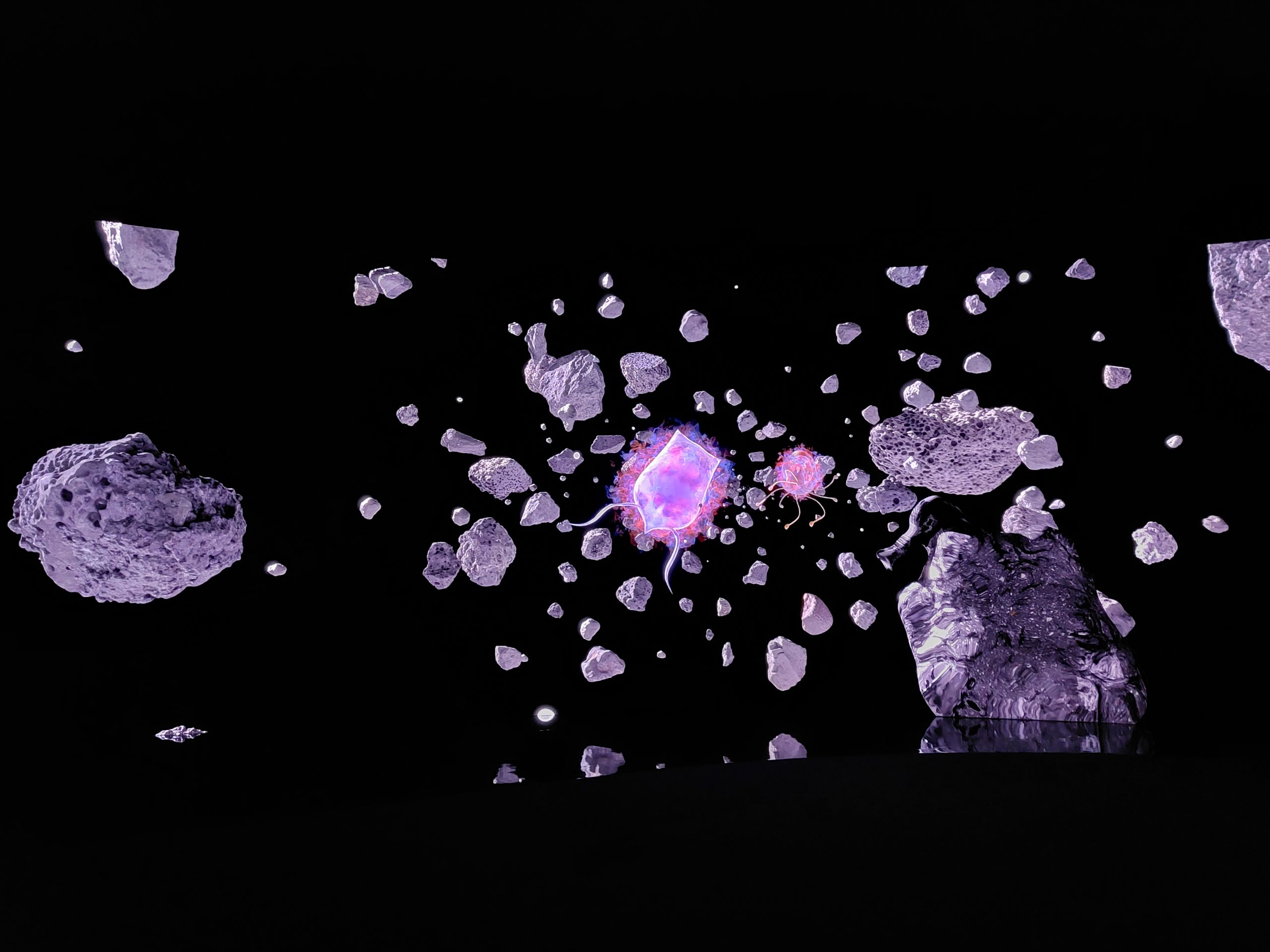VENICE — Inside a darkened triangular room, Josèfa Ntjam’s captivating video installation “swell of spæc(i)es” (2024) loops indefinitely, telling a story without beginning or end. Commissioned by LAS Art Space as a collateral event of the Venice Biennale, the eponymous exhibition includes a soundscape that envelops viewers, who feel their way to cushioned seating, crawl into a glowing egg-like structure, or huddle under jellyfish sculptures. Crafted from an innovative sunflower oil resin, those umbrella-like sea creatures contain hidden speakers narrating the story of the futuristic aquatic creatures that float, glide, and metamorphose across the mesmeric film playing on the curved LED screen.
“swell of spæc(i)es” is the product of a body of research into the depths of the universe, from the darkest trenches of the oceans to the furthest reaches of space to the origins of time itself. Ntjam threads a powerful narrative between these extremities via ancient myths, drawing deeply from two Indigenous creation stories in particular. The first, from the Dogon people of Mali, West Africa, is the tale of the goddess Amma, who created the stars by throwing handfuls of earth into the sky, and made the water spirits who formed the oceans. The second is a tale from the Huaorani people of Ecuador about a snake that ate the stars, turning them into the first trees and bodies of water.
Ntjam merges these stories using an assemblage technique central to her practice: She creates animated characters with Artificial Intelligence and other digital tools that combine marine creatures with totemic West African sculptures. The work flashes chimerically across different scales, from the microscopic to the cosmic. At one point in the film, the snake opens its mouth, as if swallowing the viewer. Entering its digestive tract, we find an environment that recalls both a marine environment and an alien planet, inhabited by myriad lifeforms both familiar and bizarre. In Ntjam’s formulation, there are universes within universes, and tucked inside living beings of all sizes.


In the accompanying booklet, Ntjam describes her interest in developing a “futuristic ancestrality” through a “non-origin of species.” To this end, she borrows Mawena Yehouessi’s notion of alter-futurism, which focuses on the abundance of imaginative narratives that transcend the linearity of Western thought systems. Her work rejects the notion of a single origin of life, foregrounding a new, multiplicitous creation story that expands indefinitely to accommodate myriad beliefs and scientific developments. From this perspective, both the ocean and outer space can be seen as sites for colonial exploration and extraction; at the same time, their unpredictability and unknowability also make them fertile ground for conceptual resistance and emancipation through experimental tropes such as speculative science fiction or afro-futurism.
Ntjam focuses on plankton as a point of connection between the physical and conceptual realms referenced in the creation story of swell of spæc(i)es. She worked with Venetian marine biologists to learn more about the lifecycle of these widespread creatures, which are part of an interspecies history of migration via ocean currents. Plankton go through a phase of star-like bioluminescence through which they form the hard shells that eventually drift to the ocean floor, fossilizing into limestone over thousands of years. Fascinatingly, limestone has recently been identified in the debris of a former planet orbiting a white dwarf star, suggesting the possibility of alternative yet familiar forms of life elsewhere in the universe. Plankton, therefore, offers a rich link between flesh and stone, sea and space, ancient histories and future possibilities — the manifestation of Ntjam’s vision of a vast and compelling universe swelling with stories, species, and spaces.


Josèfa Ntjam: swell of spæc(i)es continues at Accademia di Belle Arti di Venezia (Fondamenta Zattere Allo Spirito Santo, Venice) through November 24. The exhibition was organized by Carly Whitefield, Sophie Korschildgen, and Zoe Büchtemann.

